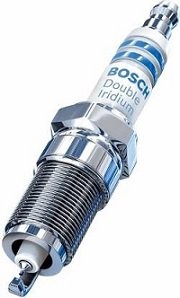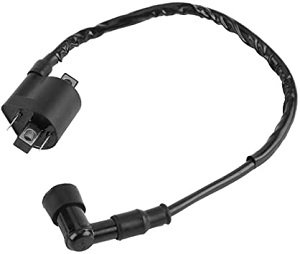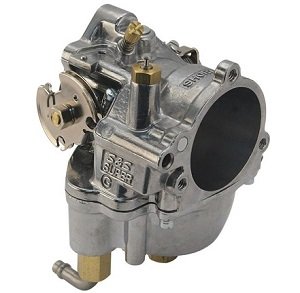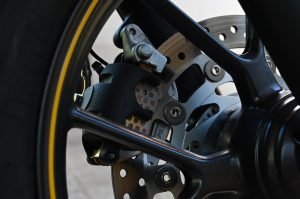Why the motorcycle won’t start?
Updated on | By Mohit Chauhan

No one is immune from this, neither a beginner nor an experienced motorcyclist. But nevertheless, for experienced riders, malfunctions are rare, and when it does happen, they troubleshoot rather quickly. A novice motorcyclist might disassemble half his bike before he identifies the culprit, which would be a frayed insulation sticking out in front of his eyes. So, what are the most common causes of a sudden engine stop and how to troubleshoot in a shortest and surest way? Our experienced mechanic from Wild Triumph will tell you everything about it.
There can be several reasons why your motorcycle won’t start. Circumstances often point to a particular problem. Remember when exactly the motorcycle did not start – from yesterday’s trip or after a long idle time? Is it not responding after a ride in the rain, or after refueling? In this article we will tell you how to understand why a motorcycle won’t start, when you can do something yourself, and when you need to contact a specialist.
So the first thing you need after you experience a sudden engine failure is to not panic, even if it happened on a street or highway during high traffic hours. Try to take all possible precautions and let other vehicles pass. Find a suitable spot for parking so that you can safely start to troubleshoot.
The vital activity of the engine is supported by several systems, the main ones are:
- Ignition system (spark).
- Power system (fuel).
- Exhaust system.
If one of the systems is screwed up a little, then the engine can no longer work as expected. So it is necessary to check these systems one by one. The main types of faults that make the engine “dead” are:
- The spark is absent, too weak, or does not occur at the right time (ignition system).
- Too much / little fuel mixture enters the combustion chamber (power system).
- Obstructed exhaust pipe (exhaust system).
The sequence of our actions when checking these systems without additional equipment will be as follows. We start with the ignition system. Unscrew the spark plug, put it on the cylinder and turn the engine crankshaft. For now, we just need to determine if there is a spark. If there is no spark, the reasons may be as follows:
- Defective spark plug.
- Defective spark plug cap.
- High voltage wire is damaged.
- Open or inter turn short circuit of the ignition coil.
- Broken circuits due to oxidation of the wiring terminals or mechanical damage.
- Defective ignition electronics.
Before starting the troubleshooting of the ignition system, we start with the basic things, and don’t rush to take out your tools from the kit; they may not be needed. If, before stopping, the engine emits heavy smoke, there is a high possibility that a rag you carelessly threw under the saddle got sucked by the air cleaner inlet. Check if this is the case and remove any object that is hindering the air inlet. Once you have cleared the inlet from obstacles, close the fuel inlet, start your engine, and only after starting the engine reopen it.
Another important thing that needs to be checked here is the fuse. A blown fuse can cause the dashboard lights, lamps, or the horn to become inoperative. If this is the case, it means that a short circuit has occurred somewhere that needs to be found and eliminated. But, do not try to immediately get out of the situation with the help of a spare fuse. If, after a careful examination of the circuit between the battery, central switch and ignition coil, no malfunction is found, connect a light bulb to the circuit instead of the blown fuse. Please note: during this check, the ignition must be turned off!
Ignition (spark) system malfunctions
Let’s say nothing happened to the fuse. Then insert a piece of wire, a nail, or a similar object into the tip of the spark plug and bring it to the ground by 5-10 mm. Then turn on the ignition and turn the crankshaft with the kick-starter pedal. Is there a good spark? – It is very likely that the spark plug is faulty.

There may be a layer of carbon, oil, etc. that may have formed on the spark plug. Insert the spark plug in cylinder head, turn the crankshaft again. Is there a spark between the electrodes? (Sometimes it can be seen somewhere in the depths of the spark plug, and not between them – this is faulty.) However, the presence of a spark between the electrodes during this check does not guarantee the correct operation of the spark plug when it is screwed into the head: the carbon layer inside it contributes to the voltage leakage from the central electrode to the “ground”, bypassing the spark gap. On the old plugs, due to the burnout of the electrodes, the spark gap may turn out to be much larger than the prescribed one (0.6-0.7 mm). Therefore, its resistance under pressure at the end of the compression stroke may become greater than the resistance of the carbon layer inside the plug, due to which it stops working. To avoid this, we recommend that you carry a perfectly serviceable spare spark plug on all trips.
Now let’s take a step back. If there is no spark between the nail and the ground, again, do not hurry to unscrew the plug! Take out the end of high voltage wire from the tip and, slightly cut off the insulation on the end (to make sure that the copper strands are good), bring it to a distance of 5 – 10 mm to the ground simultaneously turning the crankshaft. If there is a spark it means the tip is faulty. Clean the wire end at the length of 15-20 mm and, wind it up on the spark plug, then start the engine.
Alternatively, when there is no spark between the end of the spark plug and the ground, you should continue to troubleshoot by moving to the ignition coil and its electrical circuits. Check the condition of the end of the high voltage wire and that it is firmly seated in the coil socket. When riding a motorcycle in heavy rain, the ingress of water on this unit almost always leads to failures of the ignition system: high voltage does not reach the spark plug, breakdown occurs either at the point where the wire exits the coil, or between the wet wire and the edge of the cylinder head.
If everything is okay here and the wires are connected securely, then check if the coil is “giving out” enough voltage. Now insert a nail instead of a wire in the spark plug and check again if a spark occurs in the 5 – 10 mm space between the end of the nail and the ground. If the available voltage is not enough to break through such a gap in the air, then it will not break through the gap between the spark plug electrodes at significant pressure at the end of the compression stroke. This means that the high-voltage wire is faulty: the insulating layer might be damaged, or a wire breakage inside the insulation is also possible, but this happens extremely rarely.
If there is still no spark, this means that the coil itself or its supply circuit is faulty. Let us now recall how the ignition coil works. When the contacts of the breaker are closed, the current flows through the primary winding of the coil. At a certain moment, when the piston is near the top dead center, the contacts of the breaker open, interrupting the current in it. In this case, a high voltage is induced in the secondary winding, sufficient for the spark to break through the gap in the spark plug. The sharper the current in the primary winding, the higher the voltage arising in the secondary. Therefore, a capacitor is connected in parallel to the contacts of the breaker, the correct operation of which contributes to a sharper interruption of the current in the primary winding.

When the contacts of the breaker are dirty or badly worn out due to gradual burning, they begin to work less efficiently, and this reduces the voltage, created by the coil. If the capacitor is completely removed from the ignition circuit, then it will worsen its operation. In the event of a capacitor breakdown, the contacts of the breaker are shunted by it, due to which, when the crankshaft rotates, the current in the primary winding of the coil is not interrupted and the ignition fails. It also ceases to act when the moving contact of the breaker or the wires going to it are closed to ground. If the circuit between the coil and the breaker is open, the current does not flow through the primary winding, and this also leads to ignition failure.
So, check if there is current flowing through the primary winding of the coil and if the circuit breaker is breaking. To do this, you can use the test lamp by connecting it to terminals of the coil. Alternatively, turn on the ignition, turn the crankshaft, and watch the arcing of the breaker contacts. If a current flows through them, then a spark should be visible on them when they open. If there is no spark, the capacitor may have broken. In this case, replace the capacitor.
If the ignition system looks well in order, proceed to check the power system.
Power (Fuel) system malfunctions
- Contaminated, dirty or old fuel.
- The gas valve is faulty, the opening of the gas tank cap is clogged, or the fuel filter is clogged.
- Clogged or misaligned carburetor.
- Wet or torn air filter.
- Damaged gaskets or carburetor pipe.
Check if the carburetor is clogged, and whether gas is supplied to it from the tank. To make sure that the reason is precisely the lack of fuel, pour a few drops of gasoline directly into the plug hole, screw the plug into place and try to start the engine.

If everything is normal, then the engine should make several revolutions on its own. In this case, we check whether the gas filter is clogged, whether the gas tap or the vacuum valve is working. These actions must be performed with the air filter removed and the gas tank cap removed. It has a hole for air, which can also get clogged. If the valve is a conventional mechanical one, then we simply open it, remove the hose from the carburetor, and see if the fuel is leaking. If the valve is vacuum, we do the same thing but by turning the engine with a starter. This creates a vacuum in the carburetor inlet pipe and the vacuum valve opens up.
If the engine is running, but not reaching full power, more serious diagnostics will be needed. Check if the carburetor is correctly adjusted. You will also need to check the ignition timing with a stroboscope. But sometimes, especially on used motorcycles with high mileage, the muffler is simply clogged (the probability of this kind of malfunction is quite high).
Read more: How to clean a motorcycle carburetor
Motorcycle won't start and backfires
If the bike completely refuses to start and makes “shooting” sound, this may be caused due to improper maintenance of the ignition system, the use of low quality fuel, breakdown of electronics that regulate the supply of fuel, or accumulation of excess fuel inside the muffler. And if you ride for a long time with a dirty carburetor or on a poor quality fuel, the compression of the engine cylinders will be disrupted, which will lead to engine failure.
What to do?
- Check whether the nozzles and the exhaust vents are tight.
- Clean the air filters and carburetor.
- Check the spark plugs, and if necessary, replace them with new ones.
If you have a rev limiter, some of the fuel / air mixture enters the exhaust system, where it ignites when it comes in contact with the hot metal.
To prevent problems with starting the engine, check the oil, brake fluid, and antifreeze level before riding.
Also read: How to remove rust from motorcycle tank
Store the bike with a full tank of fuel, otherwise condensation will build up in it. Before winterizing the motorcycle, remove the battery and leave it charged in a cool and dry place.
Motorcycle will not start from the remote start button
The remote start key fob is powered by a battery. So there is a high possibility the battery has run out or the contact has come off. Open the key fob cover, check the contact, and if required, replace the battery.
Tip: Sometimes the bike won’t start after a bad tuning. Adding or removing electrical equipment like lights, horns, etc., upsets the overall balance of the circuit. The relay may not have enough current to operate. To eliminate the malfunction, contact your specialized technical center.
Why the motorcycle won't start in the cold
Cold fuel cannot evaporate normally and settles on the walls of the intake tract. For an emergency cold start, preheat the intake manifold with a hairdryer, or hot water, when it is not very cold. Do not use an open flame to warm up the engine.
Condensation may accumulate in the tank, filter or chamber if the motorcycle is parked in the cold for prolonged duration. This causes the fuel supply to freeze and shut off. In this case, after the engine is warmed up artificially, the condensation must be drained off before starting the motorcycle.
Why a hot motorcycle won't start
Difficulties with starting a hot engine may arise due to possible air leaks in the intake tract or under the cylinder head.
Other possible reasons include:
- Ignition timing is incorrect;
- Low compression in cylinders;
- Lost valve clearance (on a four-stroke motorcycle).
In these cases, basic diagnostic checks will not help and you will need professional equipment to troubleshoot the problem. And even if the starting problem appears sporadically, we advise you not to postpone and contact the service center else a serious malfunction will occur.
The motorcycle suddenly stalled and did not start
Remember what preceded the breakdown:
- While riding a motorcycle, the power dropped suddenly and the engine produced jerks before stalling, then it is possible that there is not enough fuel. The gas in the tank has run out or the valve is clogged.
- Motorcycle stalled in the rain or after riding through a puddle; clogged air filter or wiring, or both. If this is the case, you might also notice that motorcycle engine is overheating. Try to clean all the dirt from the radiator before starting the engine back again.
- While riding, the engine suddenly stalled after a smooth ride, then it simply an electrical problem. The issue can be related with the spark plug, capacitor, or the coil. If this happened after a short time while riding, check if you forgot to open the fuel tap.
- The engine started but did not develop high revs; then the problem is related to ignition setting or incorrect adjustment of carburetor.
Electric starter does not turn on
- Check if the ignition button is off. It is usually located on the right side of the handle bar (red color).
- Battery voltage too low; if you hear the characteristic sound of the starter relay starting, charge or replace the battery.
- Dirty contacts in the ignition switch or near the starter button; unscrew the switch and clean the contacts with a special spray gun for electrical installations.
- Main fuse or ignition relay blown; check and replace as required.
Bottom Line
The normal operation of the internal combustion engine mainly depends on the quality of the fuel. Moreover, a “hot” engine is less susceptible to this factor when compared to a “cold” engine which may not even start at all.
If your motorcycle won’t start after a recent refuel, you may have filled a low-quality fuel. If you normally refuel from a canister, rust particles or sand may enter the tank along with fuel. To rectify the situation, drain low-quality fuel from the tank and carburetor. Fuel Injected engines are more difficult; in order to drain the fuel from the tank, you may have to remove the fuel module.
If you do not know how to reach to the spark plugs or carburetor, do not torment yourself as well as the motorcycle. Seek professional help immediately. Good luck!




